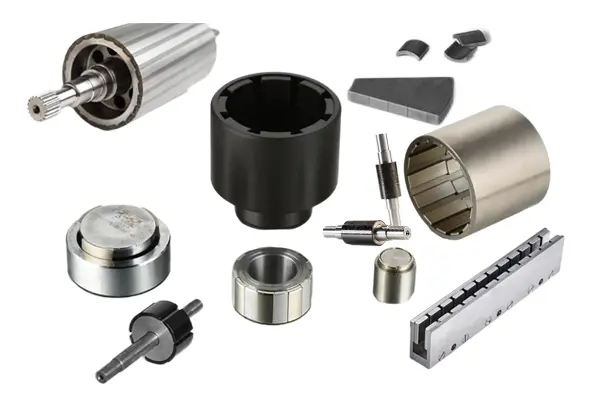
Magnetic assemblies are essential components in a variety of industries and applications. From simple refrigerator magnets to complex components in advanced technology and machinery, they play a pivotal role in everyday life.
These refer to the component or the product that combines both magnetic and nonmagnetic materials to create a specific field or function.
The assembly enhances the magnetic force and focuses it on the particular area also enabling the achievement of a desired effect or function. The non-magnetic components often provide the structural support or serve to direct the magnetic field.
Also the Custom Neodymium Magnets are a favorite material for product designers and mechanical engineers. They are used in industrial product design or the design of everyday products they provide an easier, faster and more flexible and are a more affordable way to install the products.
Let’s discuss the various types of magnetic assemblies so that you can be helped.

Types of Magnetic Assemblies
Permanent magnetic assemblies:
These assemblies employ permanent magnets that maintain a constant magnetic field without the need for electrical power. You can easily see them in motors and sensors also in generators.
Electromagnetic assemblies:
These assemblies utilize an electric current to generate a magnetic field and when the current is turned off it disappears. They are widely used in applications such as transformers, MRI machines and others.
Materials that are used in Magnetic Assemblies
When it comes to the materials used for creating magnetic assemblies the choices are vast. The selection of the materials largely depends on the desired magnetic properties the operating environment and the specific application requirements. Custom Neodymium Magnets also uses various materials that you must know-
The strongest magnet material now on the market, neodymium iron boron (NdFeB) has excellent performance even at small sizes. On the other hand it is less resistant to heat and corrosion.
- Alnico: Made of cobalt, nickel and aluminum Alnico magnets are extremely resilient to corrosion and high temperatures. They have moderate magnetic strength.
- Samarium cobalt: It is costly but has exceptional temperature stability and great magnetic strength, making it ideal for demanding applications.
Understanding the basics of magnetic assemblies is the initial step in exploring the fascinating field. You must also know the manufacturing process of these assemblies which we have mentioned.
Manufacturing process of the magnetic assemblies
The manufacturing of magnetic assemblies often involves a series of steps that include machining, magnetizing and assembling.
The process begins with the production of magnetic material which is usually carried out using powder metallurgy or sintering techniques.
Once the magnets are formed they are magnetized to create a specific magnetic field. These magnets are combined with other nonmagnetic parts and often use adhesives or mechanical fastening.
Applications of the MRI Levitation Magnets
There are huge ranges of an industry that use magnets and have unique properties with versatile functionality. These are-
· Automotive: This industry uses magnetic assemblies in various components like alternators, electric motors, and more.
· Medical Industry: They are essential to the operation of many medical instruments, especially imaging devices like MRI scanners.
· Consumer electronics: Magnetic assemblies are essential components of a wide range of electronic gadgets, including computers and smartphones.



One Reply to “Understanding the Magnetic Assemblies and Other Magnets!”
Wow, incredible blog structure!